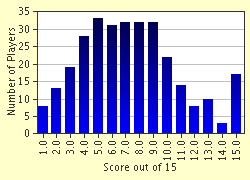Quiz Answer Key and Fun Facts
1. Where was Oliver Cromwell born?
2. In what year did he become first become an MP for his home town?
3. At which battle in October 1642, the first of the Civil War, did Cromwell command a small cavalry squadron?
4. At the first major battle of the English Civil War, who commanded the Parliamentary Army ?
5. July 1644 saw this battle just outside York. It was a decisive Parliamentary victory securing the North. What is this battle called?
6. Who commanded the Parliamentary forces at the the Battle of Naseby, June 1645?
7. The defeat of the Royalist army in June at Naseby, was followed in July by another serious defeat in Somerset. What is the name of this battle?
8. Oliver Cromwell formed and trained a fighting force. What was it called?
9. To which country did Charles I flee after his defeats in 1645?
10. Where was Charles I held during 1647, prior to his trial ?
11. In 1648 a segment of Parliament, made up of fewer than 150 members but claiming the full powers of a legitimate parliament, embarked on constitutional changes, abolishing not only the monarchy, but also the Privy Council and the House of Lords. What nickname is given to this "Parliament"?
12. On April 21, 1653, Cromwell ended the sitting of Parliament. How?
13. What title did Cromwell adopt in 1653?
14. When did Cromwell die?
15. Whom did Oliver Cromwell name as his successor?
Source: Author
deadmeat
This quiz was reviewed by FunTrivia editor
bloomsby before going online.
Any errors found in FunTrivia content are routinely corrected through our feedback system.


